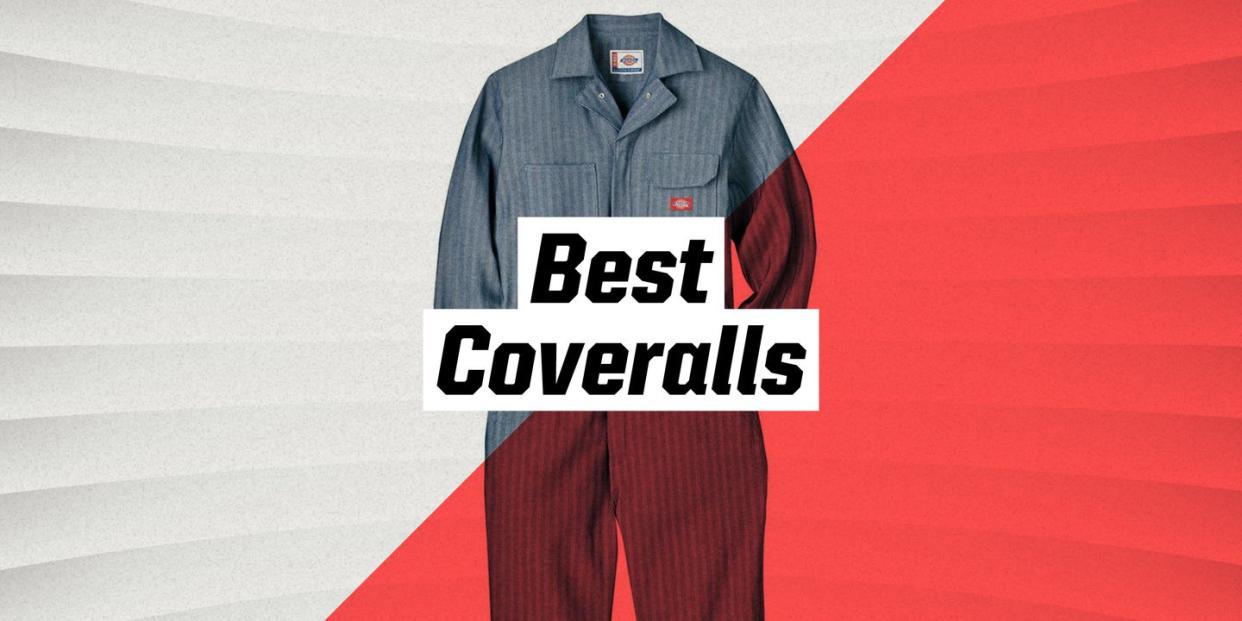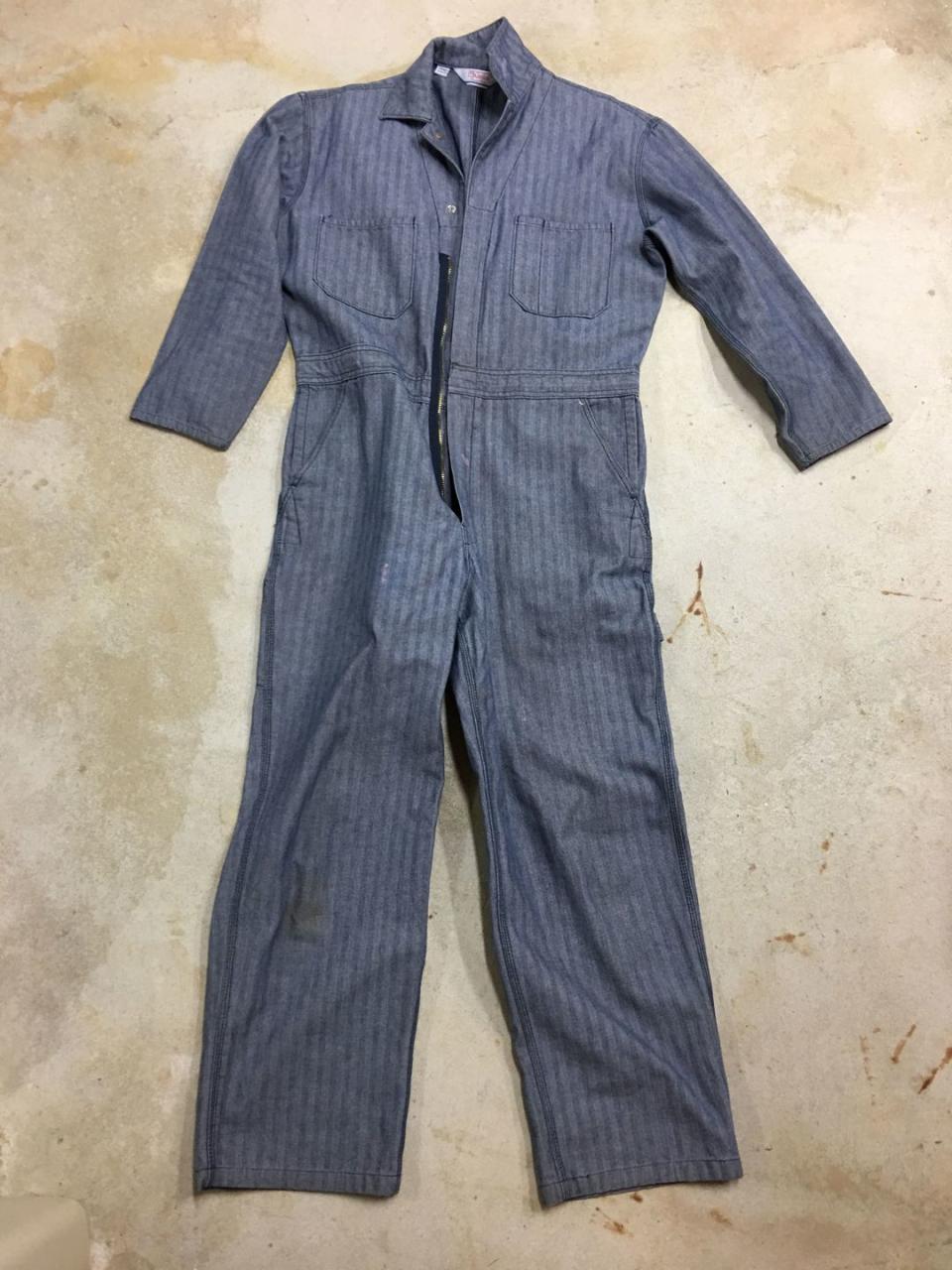Coveralls Are a Life-Saver, and You Should Own a Pair. Here’s How to Pick One.

Tired of getting your casual, everyday clothes stained, ripped, or ruined? Here’s a solution that you probably haven’t thought of: coveralls. No, we’re not kidding. Coveralls may look old-school, but they’re great for keeping your warm, protecting the clothing you’re wearing underneath, or just slipping into to quickly get a dirty job done. If you don’t already own a pair, it’s time to make change that.
Why Coveralls?
At Popular Mechanics we’ve worn coveralls for years to protect ourselves on construction projects and while cutting firewood, doing property maintenance, performing vehicle/equipment repair, and more. We even throw them on to spend a couple of hours in the shop rather than change into work clothing.

Coveralls are a warm, protective layer in the winter. But we also find them useful in the fall and spring in place of insulated underwear because by late morning or afternoon we can strip them off and be comfortably cool in jeans and T-shirt. And frankly, it’s good to have one garment that’s meant to get trashed. Decades of experience have taught us that valuable lesson.
Here are some pointers to selecting these seemingly goofy but practical old-school garments.
Select the Weight
The fabric comes in a variety of weights to match the severity of duty as well as the temperatures they’re meant to endure. Heavier garments stand up better to more frequent and heavier wash cycles, but they’re uncomfortably warm in the summer.
Five, six, seven, eight, and 10-ounce (per square yard) fabric weights are common. Lightweight poplin coveralls with short sleeves are ideal for summer. A heavier option is made of 7.5-oz. fabric. You can go heavier still at 8.75-oz. fabric, like this one from Dickies. The heaviest non-insulated coverall is the fisher stripe, built out of 10-oz. fabric. By modern aesthetics, these look dated, as if from a 1960s high-school shop-safety film, but the fisher stripe weave is extremely tear resistant.
Select the Size
Coveralls can be worn one of two ways: as the primary garment or over clothing you want to protect. Look carefully at sizing information and choose accordingly. When in doubt, call the manufacturer and speak with a customer service person. And if you have a work clothing store near you, pay a visit in person.
Note that some manufacturers cut the garment so generously that you don’t need to size up to wear their coveralls over clothing. Other coveralls are cut on the slim side, especially the summer-weight versions. And of course, your physique plays a role.
Insulated Coveralls
Warm, tough, and versatile in the coldest of the cold weather, insulated coveralls are typically made from 10 to 12-oz. cotton duck fabric with a quilted lining. They’ll always have a zippered leg to help facilitate pulling on over boots. However, ones with ankle-to-waist zippers tend to be easier and faster to put on and take off. This is extremely helpful if you’re in and out of coveralls more than once in a day’s work.
How We Tested
We researched popular features, scoured consumer reviews, and talked with product designers to select these coveralls. Testing these models was based on our combined decades of experience using coveralls. We wore each of these models for their range of intended applications and environments which included outdoors cutting wood and performing property maintenance, in workshops both heated and unheated, working on equipment, and on construction projects. The coveralls were then evaluated based on fit, comfort, durability, and the features specific to each style.
—EDITORS’ CHOICE—
Berne Heritage Insulated Coverall
These traditional insulated coveralls from Berne checked all the boxes for us. They’re made from 10-ounce duck cloth, which, despite being a heavy-duty fabric, didn’t require any breaking in—these coveralls were comfortable from the moment we put them on. In our time using these coveralls, we appreciated the pleated elbows and back panels, which help prevent binding when crouching, squatting, bending, or reaching while working in tight spaces. In temperatures ranging from 20 to 45 degrees F, we found the Heritage Insulated Coverall to be adequately warm, when paired with the right garments for the job underneath. Things like splitting wood or shoveling snow required lighter base layers as it was easy to overheat, while less active work like pruning fruit trees or doing electrical work in unheated spaces required heavier base layers. When coming in from the cold, we appreciated the ankle to hip leg zippers for making quick work of stripping them off—even when wearing winter boots. There is ample storage for the tools you need to carry, with utility pockets on both sides, a hammer loop, and two zippered pockets on the chest and one in the rear for things you don’t want to lose. Berne delivered on everything we expect from a traditional insulated coverall.
—BEST VALUE—
Dickies Fisher Stripe Coverall
These classic Fisher Stripe coveralls from Dickies haven’t changed much in years, and that’s a good thing. In our experience, the heavy, 10-ounce, 100 percent cotton Fisher Stripe material is tough stuff that resists piercing and tearing, at a very reasonable price. These coveralls feature old-school technology, with basic pleats across the shoulders to facilitate mobility when reaching and stretching, and elastic in the waist that allows for some give when bending low. We wore them in the shop in cooler temperatures, over our casual clothing, and in warmer temps over a T-shirt and boxers. While there was some occasional binding over street clothes, they provided ample protection in both cases. We can’t help but appreciate the simple, affordable Fisher Stripe coveralls, delivering exactly what we expect from them.
—BEST MEDIUM WEIGHT COVERALL—
Duluth Fire Hose Coveralls
These Fire Hose Coveralls feature DuluthFlex fabric, a tight-knit cotton blend containing 3 percent Lycra that flexes a little to enhance maneuverability. In testing, worn over our casual clothes, we found them quite comfortable, with the stretch helping prevent binding between the clothing layers. We wore the Fire Hose Coveralls working in the shop as well running electrical cables through a very dusty old barn, where we came to appreciate the tight weave of the coverall material. On protruding nails and splintered wood, we noted it resisted being pierced when snagged. Additionally, the years of fine dust we encountered failed to penetrate the fabric and soil our inner layer of clothing. Zipper access to our inner pants pockets also helped to keep our inner clothes clean. Lots of pockets, including cargo pockets on the outside of each leg and two smaller utility pockets, meant we could carry several tools and keep them organized and separate without having to fish through a full pocket in search of the right item. Rounding out storage is a single hammer loop and two chest and two back pockets, with Velcro flaps to keep contents secure.
—BEST LIGHTWEIGHT COVERALL—
Red Kap Performance Plus Coverall
Red Kap offers these Performance Plus Lightweight Coveralls for situations where you don’t want to add bulk pulling coveralls over street clothes, or when it’s too warm to wear street clothes under them at all. The very light material requires minimal care, resisting stains, fading, and wrinkles—after wearing and washing them multiple times, they appeared as new in our testing. Worn in the shop, we found them to be light and comfortable, as advertised. Mesh flex panels on each shoulder do double duty, allowing some stretch as we moved, and moisture wicking to assist keeping us cool. While the material does resist oil staining, we found the thin nature of it didn’t provide great protection from penetration liquids or dust. That’s not really a complaint—it is going to be a trade-off with a much lighter, cooler fabric. The Performance Plus coveralls have standard chest and hip pockets, as well as two rear pockets, with one additional pocket on the outside of the left leg.
—BEST INSULATED COVERALL—
Carhartt Yukon Extremes
We tested these coveralls from Carhartt in temperatures from the low teens up to freezing in snowy, windy conditions. The Yukon Extremes Coveralls delivered rugged protection, keeping us warm during the worst winter weather we’ve seen in recent years. Our biggest challenge was learning not to overdress on our inner layer. Performing snow removal, both shoveling and using snow blowers, we found no need for multiple layers beneath the Yukon Extremes. For less active tasks, or colder weather closer to zero degrees F, we could definitely see a need for layering, but we never went beyond a thermal undershirt, flannel shirt, and jeans during our testing. The Cordura shell does a formidable job of keeping the wind at bay, and the lack of access to inside hip pockets helps ensure there is no way for drafts to sneak in. Thinsulate insulation helps prevent these coveralls from feeling too bulky, and we found the pleats at the elbows and shoulders kept them from binding through our range of motion. We were able to slip in and out of the Yukon Extremes easily, even wearing winter boots, thanks to full, ankle-to-hip leg zippers. With utility pockets on both legs, a hammer loop, four front pockets (two with zippers), two rear pockets, and two inside pockets, there are plenty of places to stow tools, phones, ID, and anything else you need to carry.
You Might Also Like


